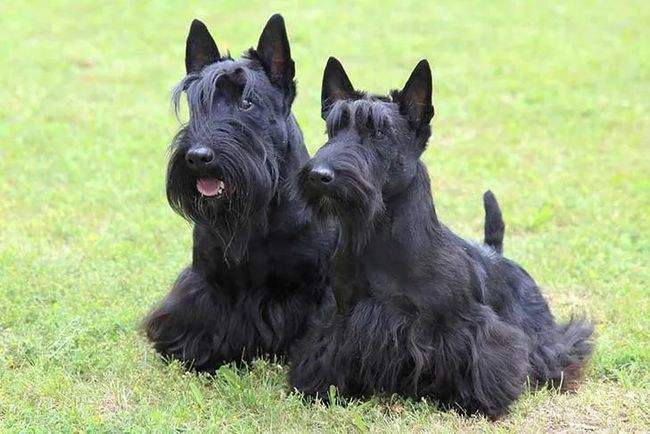Scottish Terrier
IUCN
LCBasic Information
Scientific classification
- name:Scottish Terrier
- Scientific Name:Aberdeen Terrier
- Outline:Carnivora
- Family:Canidae
Vital signs
- length:25cm
- Weight:8kg
- lifetime:12-13year
Feature
The Scottish Terrier is one of the most original purebred Highland dogs. It was originally used as a hunting dog, and now it is used as a family companion dog.
Distribution and Habitat
The Scottish Terrier originated in Scotland, England
Appearance
The skull is smooth with no protrusions or depressions. The teeth are large and regular, meeting in a scissor or level bite. The nose is black and of medium size. The neck is of medium length, strong and muscular. The forechest expands forward in front of the legs and downward to the base of the chest. The forelegs are very heavily boned, vertical or slightly bent, with the elbows close to the body and located under the shoulder blades, and the forechest is clearly in front of it. The stifles are moderately bent and very straight from the hock to the ankle, with the hocks located on the bottom of the foot and parallel to each other.
The coat of the Scottish Terrier is undulating. The outer coat is wiry and coarse, and the undercoat is soft and dense. The coat is longer in the beard, legs and underbody. The hair on the forejaculation is longer, giving the impression of an eyebrow. The color is black, wheaten or with spots of other colors.
Details
The Scottish Terrier is a small dog, nicknamed "Scottish Boy". It has a very long history, but its exact origin and pedigree are no longer clear.

The first classification of Scottish Terriers in a dog show was held in Birmingham, England in 1860. About 1877, a dispute broke out at Lives Fountain regarding the ranking of the Scottish Terrier and the standard and characteristics of the Scottish Terrier. It was not until about 1880 that a standard was established and adopted by all parties to the dispute. The essence of this standard has been retained in all subsequent standards, with only minor changes. In 1882, the Scottish Terrier Club was established, with joint officers from England and Scotland. Later, as interest in the breed grew, the two countries formed their own clubs.
In 1883, the Scottish Terrier was first introduced to the United States. The first Scottish Terrier registered in the United States was named Dake (3688), and the American Kennel Club was established at about the same time. A female dog named Lassie was registered in December 1881.
The earliest historical role of the Scottish Terrier and the dwarf terriers (West Highland White Terrier, Cairn Terrier, Dandie Dinmont Terrier, etc.) is similar. They were all bred to clean up pests and mice in farm mines. The Scottish Terrier has shorter legs than these terriers, but it is super cute, and there is a hint of indifference in its cuteness.
The Scottish Terrier's cute legs have attracted a lot of attention, and it has become a "little star" of the dog breed. In the Disney movie "Lady and the Tramp", an immortal gentleman image was created. US President Roosevelt doted on it. It is said that in 1944, President Roosevelt accidentally lost his beloved dog "Fala" in the Aleutian Islands of Alaska. In order to find Fala, President Roosevelt ordered a destroyer to rescue Fala. To commemorate this legend, there is now a statue of the dog Fala next to the statue of Roosevelt in Washington. In addition to President Roosevelt, President Bush Jr. also loves Scottish Terriers.
Scottish Terriers are active and confident, cautious, stubborn, and difficult to get along with other dogs. Because of their rudeness and strength, they are called "stubborn", but after being tamed, they are very loyal and smart partners.
Protect wild animals and eliminate game.
Maintaining ecological balance is everyone's responsibility!








